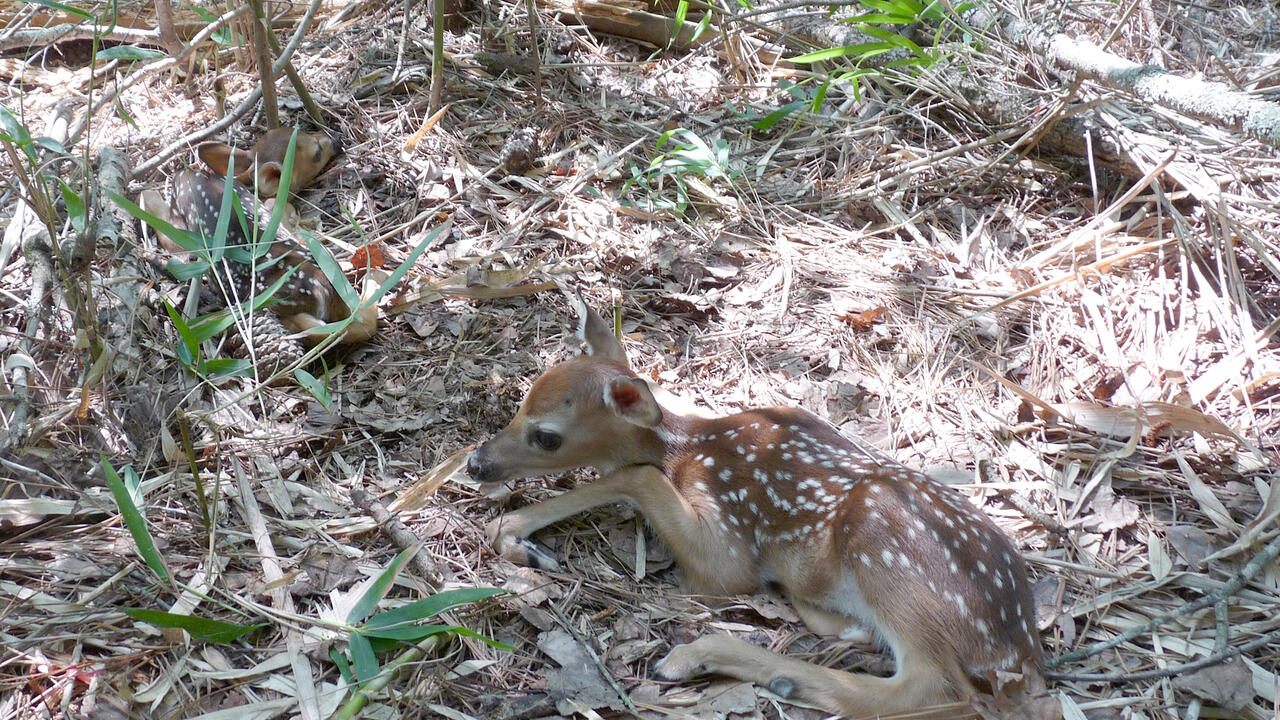STARKVILLE, Miss. – Deer season is right around the corner. Right now, baby deer are taking their first steps -- and who doesn’t love baby deer?
I look forward to seeing my first baby deer, or fawn, each year. That first sighting is typically a quick glimpse of a fawn following its mom’s lead as they bolt for cover. For a few lucky folks, the encounter is much more intimate.
Every year, many people stumble across bedded fawns that appear to be abandoned. If you happen to find yourself in such a situation, here is what you should do:
Nothing! Back away and leave the fawn alone.
Immediately after a fawn is born, the doe mother consumes the afterbirth and licks the fawn all over to eliminate scents that may attract predators. It is a myth that fawns are born odorless; in reality, their scent helps the mother find them when they become separated.
Within 10 hours of birth, the doe will move the fawn to a different area, and the fawn will instinctively bed down. If the doe has multiple fawns, she will separate them to reduce the risk of both fawns (sometimes three) being taken by a predator.
During the first few weeks of life, fawns spend most of their time apart from the doe. To meet high lactation demands, the doe spends much of this time in search of high-protein forages. This absence also helps prevent the doe’s scent from leading predators to the bedded fawn. In between foraging, she visits the fawn a few times per day just long enough to nurse. While nursing, the doe licks the fawn to stimulate waste release, then consumes the waste to ensure the odor doesn’t attract predators.
There are several behaviors and adaptations that help fawns avoid detection while they are bedded. They lie very still, and if alarmed by a predator, they can lower their heart rate by more than 30 percent to help avoid detection. Their spots help with concealment and allow them to blend into the surrounding vegetation -- this is known as cryptic coloration.
So if you are out and about and happen upon a bedded fawn that lies there motionless and doesn’t run away, it doesn’t mean something is wrong with it. It is just doing what nature has “programmed” it to do.
If you know someone who has removed a bedded fawn from its location, please insist they return it to the exact location immediately. The doe will not reject the fawn because a human touched it. Plus, in many states, it is illegal to possess a deer fawn, and research shows that captive-raised fawns are unlikely to survive when returned to the wild.
We all have a soft spot for fawns, so let’s work together to ensure they have the best chances of survival.
EDITOR’S NOTE: This is the second column of a relaunched Extension Outdoors monthly series. Each column will be released mid-month. Dr. Jacob Dykes is an Extension wildlife specialist and an assistant professor of wildlife management at Mississippi State University.
Contacts
-
 Assistant Professor
Assistant Professor- Wildlife, Fisheries & Aquaculture
